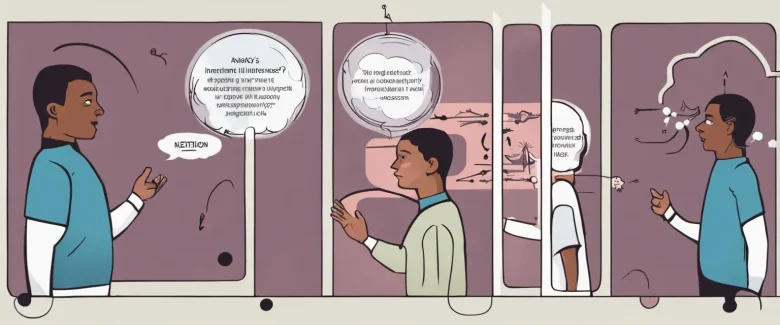In “Crucial Conversations: Tools for Talking When Stakes are High,” Kerry Patterson explores the art of handling delicate discussions effectively. This book offers practical strategies and insights into transforming difficult conversations into opportunities for growth and positive change. Kerry Patterson, the co-founder of VitalSmarts and a renowned communication expert, brings decades of research and experience to provide readers with valuable tools for navigating sensitive topics, managing emotions, and fostering healthy dialogue.
Chapter 1: What is a Crucial Conversation?
Chapter 1 of the book “Crucial Conversations: Tools for Talking When Stakes are High” by Kerry Patterson introduces the concept of crucial conversations and their significance in our personal and professional lives. It explains that a crucial conversation is a discussion between two or more people where the stakes are high, opinions vary, and emotions run strong.
The chapter emphasizes the critical impact that these conversations can have on our relationships, results, and overall success. It highlights how we often avoid or mishandle crucial conversations, leading to negative outcomes such as broken relationships, poor decisions, and unproductive work environments.
The authors describe how a crucial conversation occurs when three conditions are present: high stakes (the outcome has a significant impact on our lives), differing opinions (people have contrasting viewpoints or ideas), and strong emotions (people feel strongly about the topic or situation). These conversations can occur at any level, from personal relationships to workplace discussions.
The chapter provides examples of crucial conversations in various contexts, such as a team addressing a coworker’s poor performance, a married couple discussing finances, or a healthcare professional addressing a patient’s risky behavior. It emphasizes that these conversations, although challenging, provide an opportunity to improve relationships and results if handled effectively.
Additionally, the chapter introduces the concept of “silence and violence” as common reactions when faced with a crucial conversation. Silence refers to avoiding or withdrawing from the conversation, while violence represents aggressive or hurtful tactics used to impose one’s views.
Overall, Chapter 1 sets the foundation for understanding crucial conversations as high-stakes discussions that can significantly impact our lives, relationships, and outcomes. It encourages the reader to recognize and embrace these conversations as opportunities for growth, provided they are approached with the right tools and mindset.
Chapter 2: Mastering Crucial Conversations
Chapter 2 of “Crucial Conversations” by Kerry Patterson, titled “Mastering Crucial Conversations,” focuses on the importance of developing the skills needed to effectively handle high-stakes conversations. The author highlights that crucial conversations can often be emotionally charged and can have a significant impact on relationships, team dynamics, and overall outcomes.
The chapter begins by emphasizing the need to recognize when a conversation becomes crucial and how our natural instincts can hinder productive communication. The author introduces the term “the pool of shared meaning,” which is the collective understanding between individuals essential for effective communication.
To master crucial conversations, the authors suggest adopting the “Path to Action” model. This framework consists of four essential elements: opening, exploring, achieving, and closing. Opening involves creating a safe environment to encourage open dialogue by avoiding silence or violence. This stage emphasizes the importance of establishing mutual purpose and respect to create psychological safety.
Exploring focuses on promoting shared meaning by being curious, asking open-ended questions, and actively listening. The authors advise exploring the motives, concerns, and feelings of all parties involved to gain a comprehensive understanding of the situation.
The achieving stage focuses on ensuring that the conversation leads to a mutually satisfactory resolution. The authors provide strategies, such as presenting facts and appropriate solutions, to reach agreements that address everyone’s concerns.
Closing involves ensuring that the conversation ends positively and with a clear plan for future action. It is crucial to summarize agreements, express appreciation, and clarify expectations to prevent misunderstandings or unresolved issues.
Overall, Chapter 2 emphasizes the importance of mastering crucial conversations by following the “Path to Action” model. By understanding when conversations become crucial and applying the principles of opening, exploring, achieving, and closing, individuals can navigate high-stakes situations effectively and achieve positive outcomes.
Chapter 3: Start with Heart
Chapter 3 of “Crucial Conversations” by Kerry Patterson is titled “Start with Heart” and delves into the importance of cultivating the right mindset and intentions before engaging in crucial conversations. The chapter emphasizes the need to maintain a genuine desire to achieve mutual understanding and reach a positive outcome, even in the midst of difficult conversations.
To “start with heart” means to understand our own intentions and to ensure they are focused on creating a safe and respectful space for dialogue. The authors highlight the three key elements necessary to maintain a productive mindset during crucial conversations: 1) seek a healthy dialogue, 2) focus on what you really want, and 3) sincerely care about the concerns of others.
Seeking a healthy dialogue involves recognizing that there are three potential outcomes in any conversation: winning, losing, and drawing. Instead of aiming to win or avoid losing, individuals should strive for a shared understanding, where all parties contribute to a solution without sacrificing their own needs.
Focusing on what you really want requires individuals to identify their deeper motives and prioritize the relationship over short-term goals. It involves resisting the temptation to prove oneself right or make others wrong, in favor of maintaining a respectful and empathetic stance.
Lastly, sincerely caring about the concerns of others entails actively listening and validating their emotions and perspectives. By displaying genuine empathy and striving to understand their viewpoint, trust and mutual respect can be fostered, setting the foundation for effective communication.
In essence, “starting with heart” is about approaching crucial conversations with the intention of maintaining respect, fostering dialogue, and seeking a productive outcome. It is a mindset that enables individuals to go beyond surface-level debates and engage in meaningful and transformative conversations.
Chapter 4: Learn to Look

Chapter 4: Learn to Look of the book “Crucial Conversations: Tools for Talking When Stakes Are High” by Kerry Patterson focuses on the importance of being observant during crucial conversations. The chapter emphasizes the need to be aware of signs, cues, and body language in order to effectively manage and navigate these conversations.
The authors stress that during crucial conversations, individuals tend to fall into a state of stress or anxiety, which can hinder their ability to communicate effectively. Learning to look for these signs in others and oneself is crucial to prevent the conversation from spiraling out of control.
The chapter discusses three categories of behaviors that indicate when a conversation has turned crucial: silence, violence, and other warning signs. Silence includes any behavior that stops a conversation from occurring or slows its progress, such as withdrawing or going quiet. Violence, on the other hand, consists of any behavior that is intended to inflict harm on the other person, including yelling, insulting, or physically attacking. Additionally, other warning signs, such as sarcasm, eye-rolling, or defensive body language, can also indicate that a conversation is becoming crucial.
The authors caution readers against labeling others as ‘violent’ or ‘silent’ without considering their own contributions to the conversation. They emphasize the importance of a self-check to identify when one may be exhibiting behaviors that contribute to a crucial conversation.
Learning to look for these signs not only helps in acknowledging the crucial nature of the conversation but also enables individuals to address their emotions and regain control of their behavior. By paying attention to others and oneself, individuals can address the underlying issues, engage in effective dialogue, and find mutual understanding and solutions.
Chapter 5: Make It Safe
Chapter 5: Make It Safe of the book “Crucial Conversations: Tools for Talking When Stakes Are High” by Kerry Patterson explores the importance of creating a safe environment for effective communication in crucial conversations. It emphasizes that safety is vital for honest dialogue and mutual understanding to occur.
The chapter begins by highlighting the two important components of safety – mutual purpose and mutual respect. Mutual purpose implies that both parties involved share a common goal and are committed to achieving a positive outcome. Mutual respect refers to showing regard for the other’s ideas, feelings, and opinions, even if they differ from our own.
The authors introduce the idea of the three hazard warning signs – silence, violence, and masking. Silence occurs when individuals withhold their thoughts and feelings, often out of fear or discomfort. Violence appears when people use aggressive or controlling tactics as a means to gain power. Masking takes place when individuals sugarcoat their true opinions or feelings in order to avoid conflict.
To counteract the hazard signs and establish safety, the authors propose seven crucial skills: 1) apology, 2) contrasting, 3) creating a mutual purpose, 4) using CRIB (Commit to Seek Mutual Purpose, Recognize the Purpose behind the Strategy, Invent a Mutual Purpose, Brainstorm New Strategies), 5) changing your story, 6) using a contrasting method, and 7) practicing.
Apology involves acknowledging one’s role in the conversation breakdown and expressing regret for any hurt caused. Contrasting involves clarifying what you don’t mean in order to emphasize what you do mean, resolving misunderstandings or misinterpretations. Creating a mutual purpose is about finding shared interests or goals to ensure everyone feels a sense of belonging.
The CRIB tool helps to identify and establish mutual purpose by exploring the underlying motives and striving to find win-win solutions. Changing your story entails challenging your assumptions and beliefs about others’ intentions, realizing that they may not align with reality. Using a contrasting method involves addressing the negative emotions or concerns that others might have before sharing your opinions. Lastly, practice is essential for the skills to become ingrained habits.
By employing these crucial skills, individuals can create a safe environment for honest communication, which allows for genuine dialogue, understanding, and resolution of crucial conversations.
Chapter 6: Master My Stories
Chapter 6 of the book “Crucial Conversations: Tools for Talking When Stakes Are High” by Kerry Patterson is titled “Master My Stories” and focuses on the importance of recognizing and challenging the stories we tell ourselves during crucial conversations.
The chapter begins by highlighting how our minds naturally create stories when faced with ambiguous situations or conflicts. These stories help us make sense of the situation and provide us with a sense of control. However, these stories are often influenced by our own biases, judgments, and assumptions, leading us to jump to conclusions and make incorrect assumptions about others’ intentions.
The authors emphasize that it is crucial to identify and question the accuracy of these stories during a crucial conversation. They provide a powerful technique called “Tell the rest of the story” to challenge our assumptions and gather different perspectives. By probing into our assumptions, acknowledging other possibilities, and considering alternative explanations, we can gain a more accurate understanding of the situation.
The chapter also discusses common story patterns that hinder effective communication, such as playing the victim, villain, or helpless role. These patterns can escalate conflicts and damage relationships. The authors encourage readers to identify their primary story patterns and shift towards healthier patterns that promote dialogue and mutual understanding.
The authors further emphasize the importance of curiosity and genuine interest in others’ stories. By seeking to understand others’ perspectives and intentions, we can break down barriers and create an atmosphere of trust and openness.
In conclusion, Chapter 6 of “Crucial Conversations” emphasizes the need to recognize and challenge the stories we tell ourselves during crucial conversations. By mastering our stories, we can gain clarity, avoid distorted assumptions, and foster healthier communication and relationships.
Chapter 7: State My Path
Chapter 7 of the book “Crucial Conversations” by Kerry Patterson is titled “State My Path.” In this chapter, Patterson discusses the importance of effectively sharing your viewpoint and suggesting a course of action during a crucial conversation.
Patterson begins by highlighting the common mistake people make when sharing their perspective, which is jumping straight to their conclusions without providing clear reasoning or evidence. This can create resistance and defensiveness from others, hindering effective communication. To avoid this, Patterson introduces a technique called “STATE,” which stands for Share your facts, Tell your story, Ask for others’ paths, Talk tentatively, and Encourage testing.
First, Patterson emphasizes the importance of sharing facts impartially, using specific examples and avoiding judgments or assumptions. By sticking to concrete evidence, it becomes easier for others to understand and accept your point of view.
Next, Patterson suggests telling your story by explaining the emotions and conclusions you have drawn from the shared facts. It is crucial to express your viewpoint as your own perspective rather than absolute truth, allowing room for others to share their opinions.
Furthermore, Patterson advises asking for others’ paths by inquiring about their perspectives and listening genuinely. This helps to create an environment of mutual respect and collaboration, where everyone’s views are considered.
Patterson then encourages talking tentatively by using softer language and tones, which reduces defensiveness and promotes open dialogue. Presenting your ideas as suggestions rather than commands allows others to feel more comfortable engaging in the conversation.
Lastly, Patterson emphasizes the importance of encouraging testing. By openly inviting others to challenge your ideas and contributing their own insights, you create a collaborative atmosphere that promotes innovative thinking and problem-solving.
Overall, Chapter 7 highlights the importance of effectively sharing your perspective during crucial conversations by using the STATE technique. By sharing facts, telling your story, asking for others’ paths, talking tentatively, and encouraging testing, you can create an environment of mutual respect and open dialogue, leading to more productive and meaningful conversations.

Chapter 8: Explore Others’ Paths
In Chapter 8 of the book Crucial Conversations by Kerry Patterson, the focus is on understanding and exploring the perspectives and views of others in order to have productive and effective conversations. The chapter emphasizes that when engaged in crucial conversations, people tend to assume they already know the other person’s intentions and motivations, which can lead to misunderstandings and frustration. Therefore, the chapter highlights the importance of being curious and genuinely interested in understanding the other person’s point of view.
The chapter offers several strategies to employ in order to explore others’ paths effectively. One such strategy is to ask open-ended questions, allowing the individual to provide more detailed responses and enabling deeper insights into their perspective. By asking questions, one can uncover underlying reasons, emotions, and assumptions, leading to a better understanding of where the other person is coming from.
Another technique discussed is mirroring, which involves restating or paraphrasing the other person’s words to ensure accurate comprehension. Mirroring helps to validate their thoughts and feelings and reinforces the notion that their perspective is valued and understood.
Additionally, the chapter emphasizes the significance of listening. Engaging in active listening means providing undivided attention, avoiding interruptions, and genuinely trying to understand the other person’s thoughts and feelings. By doing so, one can establish a safe and open environment for dialogue.
The ultimate goal of exploring others’ paths is to reach a mutual understanding and find common ground. By employing these strategies, individuals can bridge the gap between differing perspectives, increase empathy, and establish a foundation for effective collaboration and problem-solving.
After Reading
In conclusion, “Crucial Conversations” by Kerry Patterson provides readers with valuable insights and practical strategies for handling difficult, high-stakes conversations effectively. The book emphasizes the importance of fostering open dialogue, creating a safe environment, and mastering crucial conversational skills such as listening, expressing opinions, and staying focused. Through numerous real-life examples and step-by-step guidance, the author equips readers with the tools necessary to navigate sensitive topics, manage emotions, and reach mutual understanding and agreement. By applying the principles and techniques discussed in the book, individuals can transform their crucial conversations into opportunities for growth, collaboration, and positive outcomes in both personal and professional relationships.
1. Influence: The Psychology of Persuasion” by Robert Cialdini – Just like “Crucial Conversations” by Kerry Patterson, this book delves into the art of effective communication and persuasion. Cialdini explores the six universal principles of influence, providing valuable insights into how to ethically influence others for positive outcomes.
2. Thinking, Fast and Slow” by Daniel Kahneman – This captivating book by Nobel laureate Daniel Kahneman offers a fascinating exploration of our two thinking systems: the fast, instinctive, and emotional system (System 1) and the slow, deliberate, and logical system (System 2). Understanding how these systems work can greatly enhance one’s ability to navigate crucial conversations and make sound decisions.
3. Getting to Yes: Negotiating Agreement Without Giving In” by Roger Fisher and William Ury – Building on the negotiation strategies discussed in “Never Split the Difference” by Chris Voss, this classic book offers a comprehensive guide to principled negotiation. From separating people from the problem to inventing options for mutual gain, this practical book equips readers with the tools to negotiate effectively while preserving relationships.
4. Leadership and Self-Deception: Getting Out of the Box” by The Arbinger Institute – As its title suggests, this thought-provoking book explores how self-deception affects our ability to communicate, collaborate, and lead effectively. By helping readers identify and overcome self-serving biases, the book offers valuable insights into fostering better relationships and engaging in crucial conversations with empathy and authenticity.
5. Invisible Influence: The Hidden Forces that Shape Behavior” by Jonah Berger – Delving into the realm of social influence, this book explores the often unconscious ways in which others shape our thoughts, choices, and actions. By understanding the underlying drivers of influence, readers can develop enhanced self-awareness and adapt their communication skills accordingly, making it an excellent companion to “Social Intelligence” by Daniel Goleman.



